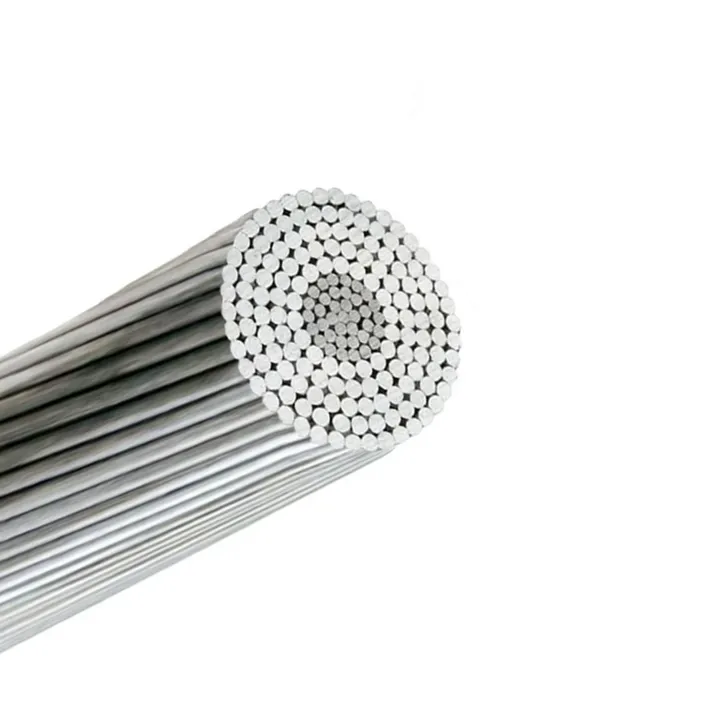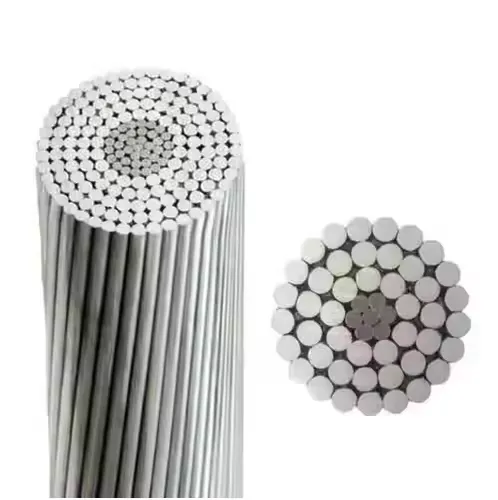Time: 2025-04-16 16:00:02 Source: Henan Province Jianyun Cable Co., Ltd.
An ACSR conductor, which stands for Aluminum Conductor Steel Reinforced, is a type of high-capacity, high-strength stranded conductor primarily used in overhead power lines. It consists of a core of steel strands surrounded by layers of aluminum strands. The aluminum provides excellent electrical conductivity, while the steel core adds mechanical strength, making ACSR conductors ideal for long-distance power transmission where both electrical performance and structural integrity are crucial. Think of an ACSR conductor as a team where aluminum is the efficient worker carrying the current, and steel is the strong support holding everything together under tough conditions.

The construction of an ACSR conductor is a layered design that balances conductivity and strength. The core is made of one or more galvanized steel strands, which provide tensile strength and resistance to sagging. Surrounding the steel core are multiple layers of aluminum strands, typically made of high-purity 1350-H19 aluminum, which is extra hard and has over 99.5% aluminum content. The aluminum strands are concentrically stranded around the steel core, with alternating right-hand and left-hand lays in each layer to ensure stability.
To protect against corrosion, the steel core is often galvanized with a zinc coating, available in Class A, B, or C galvanization levels, with Class C offering the highest protection. In some cases, the core may use aluminum-clad steel (ACS) for even better corrosion resistance, especially in harsh environments like coastal areas. The proportion of aluminum to steel can be adjusted based on the application’s needs, affecting the conductor’s overall strength and conductivity.
| Component | Material | Purpose |
|---|---|---|
| Core | Galvanized Steel or Aluminum-Clad Steel | Provides mechanical strength and reduces sag |
| Outer Layers | 1350-H19 Aluminum | Ensures high electrical conductivity |
| Coating | Zinc (Galvanization) or Grease | Protects against corrosion |
This layered construction is like a well-made cake, with the steel core as the sturdy base and the aluminum layers as the conductive icing, working together to deliver power efficiently.

ACSR conductors are favored for their unique combination of electrical, mechanical, and environmental properties, making them versatile for overhead applications. Here are some of their key characteristics:
| Property | Description | Benefit |
|---|---|---|
| High Strength-to-Weight Ratio | Steel core adds strength while aluminum keeps the weight low | Allows for longer spans with less sag |
| Excellent Conductivity | Aluminum has 60% the conductivity of copper but is much lighter | Efficient power transmission with minimal energy loss |
| Corrosion Resistance | Galvanized steel core and aluminum’s natural oxide layer | Durability in harsh environments |
| Thermal Stability | Operates up to 75°C; steel core resists thermal expansion | Reliable performance in varying temperatures |
| Reduced EMI | Steel core minimizes electromagnetic interference | Improved signal quality in sensitive applications |
These properties make ACSR conductors a go-to choice for power transmission, balancing efficiency, durability, and cost. They’re like the all-terrain vehicles of the electrical world—capable of handling diverse challenges with ease.
ACSR conductors come in various configurations to meet different application needs, primarily defined by their stranding (the number of aluminum and steel strands) and core materials. They are often identified by code names, such as animal or bird names, to simplify specification. Here are some common types:
| Code Name | Stranding (Aluminum/Steel) | Aluminum Area (mm²) | Typical Application |
|---|---|---|---|
| Rabbit | 6/1 | 50 | Distribution lines in rural areas |
| Dog | 6/7 | 100 | Medium-span transmission lines |
| Grosbeak | 26/7 | 322.3 | Long-span transmission lines |
| Egret | 30/19 | 322.3 | Extra-high voltage lines |
Variations also include ACSR/AW (Aluminum Conductor Aluminum-Clad Steel Reinforced), which uses aluminum-clad steel for enhanced corrosion resistance, and different galvanization levels (Class A, B, or C) for the steel core. These types allow engineers to tailor the conductor to specific needs, much like choosing the right tool for a job.

ACSR conductors are widely used in overhead power transmission and distribution due to their strength, conductivity, and cost-effectiveness. Their applications span various industries and environments:
| Application | Description | Why ACSR? |
|---|---|---|
| Overhead Transmission Lines | Long-distance power lines (e.g., 138 kV and above) | High strength for long spans, low sag |
| Distribution Lines | Supplying power to homes and businesses | Cost-effective, reliable for rural and urban areas |
| Renewable Energy Systems | Solar and wind farms | Handles high currents, withstands outdoor conditions |
| River Crossings | Spanning wide rivers or valleys | Extra strength for long spans and high tension |
| High-Voltage DC Systems | Long-distance HVDC transmission | Low resistance, minimal energy loss |
ACSR conductors are like the backbone of the electrical grid, supporting the flow of electricity across vast distances and diverse terrains, from rural distribution lines to high-voltage transmission networks.
An ACSR conductor is a high-capacity, high-strength stranded conductor that combines aluminum’s excellent conductivity with steel’s mechanical strength, making it ideal for overhead power lines. Its layered construction, with a steel core and aluminum outer strands, provides a balance of efficiency, durability, and cost-effectiveness. With various types like Rabbit, Dog, and Grosbeak, and applications ranging from transmission lines to renewable energy systems, ACSR conductors play a vital role in powering our world. By understanding their properties and uses, you can appreciate why they’re a preferred choice for electrical grids globally.
Word count: ~800 words
(Note: This article is based on general electrical knowledge and industry practices. For specific applications, consult a professional electrician and follow local codes.)